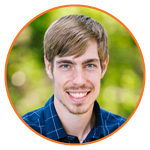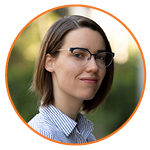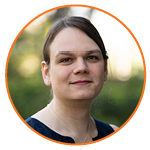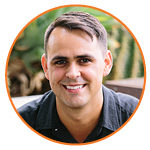Faculty
New Faculty
Meet the College’s newest teacher/scholars.
 Josh Brake
Josh Brake
Assistant Professor of Engineering
Works on optical technologies to probe and non-invasively measure brain activity with light. Works with students to develop optical tools for biomedical diagnostics and therapies.
 Xanda Schofield ’13
Xanda Schofield ’13
Assistant Professor of Computer Science
Designs easy-to-use tools for large-scale corpus text mining, with a focus on distributional semantic models.
 Erin Talvitie
Erin Talvitie
Associate Professor of Computer Science
Applies machine learning to artificial intelligence, working to create artificial autonomous agents that can act flexibly and competently in unknown environments.
 Steven Santana ’06
Steven Santana ’06
Assistant Professor of Engineering
Designs, models and creates microfluidic devices with a focus on human health. He designed and taught a new HMC course on microfluidics and has established an active microfluidics and biomaterials research program.
What is the most important thing for students to know about taking a class with you?
Josh: In my classes, I strive to lean into the synergy between learning theoretical concepts and seeing how they apply in practice. Not only is this an engaging and effective way to learn, it’s a really fun way, too! I also love working one-on-one with students, and am passionate about seeing each of my students thrive as individuals. As a professor, I seek out ways to support and encourage each student to push themselves to learn as they tackle challenging problems. I look forward to passing on the legacy of my mentors and advisors by mentoring my students as they develop into the next generation of engineers, scientists and mathematicians; people of strong character who are not only technically excellent, but understand the important role they play in their communities and society.
Steven: Engineers create so there is a huge responsibility for them to strive to understand society’s needs and critique their own work, especially for any possible consequences. An engineer’s work is necessarily missional and service-oriented. Meeting needs is great, but none of it can happen without having technical excellence. When working with students, in class or otherwise, I work to communicate both a mindset focused on service and technical excellence.
Xanda: As much as possible, I want work in my classes to have clear connections to my students’ lives, whether it is through solving real-world problems or just having fun with memes. That works best when students share those interests with me, so my students should always feel free to ask me tangential questions offline or send me stuff slightly connected to the class.
Erin: This is advice for all classes! Learning and creative problem-solving can’t be done well in a hurry. It’s hard for a busy college student to pull off (not to mention for professors!) but it’s important to spread out the work so you have time to be confused, get stuck, try an approach that doesn’t work, have a brilliant idea over a bowl of cereal, ask a question, and then to iterate until you work out the kinks. All of that is naturally part of the process and should be accounted for in your time budget.
What book(s), blog or podcast would you recommend for someone who wants to learn about your academic area?
Josh: Some of my favorite lay-accessible resources for learning about how particular optical components work are the webpages maintained by optical component distributors like Thorlabs and Edmund Optics. Wikipedia also tends to have some good introductory material about the history of optics and nice illustrations of the basic concepts. Some of my favorite books on the topic are David J. Griffiths’ Introduction to Electrodynamics, Joseph Goodman’s Fourier Optics, and, for something more specific to my field of study in biophotonics, Lihong Wang’s Biomedical Optics.
Steven: Microfluidics is an interdisciplinary field, so HMC makes a great home for it! My work includes chemistry, cell biology, material engineering and fluid mechanics. If you’re interested in how these topics can connect in microfluidics, the blog circle.ufluidix.com/blog/ is a good place to start.
Xanda: My favorite starting point for computational analysis of text is The Stone and the Shell, a blog by Prof. Ted Underwood at UIUC. For a more in-depth how-to, Matt Jockers has a book called Text Analysis with R for Students of Literature. Lisa Rhody also has a great article called “Topic Modeling and Figurative Language” that I think is a cool example of work in this space.
Erin: I have to admit that I haven’t read it myself but I’ve heard good things about the recently published How Smart Machines Think by Sean Gerrish. It’s a general-audience explanation of what makes some recent AI success stories work. For a more academic resource, Reinforcement Learning: An Introduction by Richard S. Sutton and Andrew G. Barto is a technical—though impressively readable— on-ramp to my research area.
Favorite discipline-related joke
Josh: A photon walks into a hotel. The desk clerk says, “Welcome to our hotel. Can we help with your luggage?” The photon says, “No thanks, I’m traveling light.”
Steven: What did one engineer say to the engineer who designed a foil that produced lift but no drag? You’ve got potential!
Xanda: Optimist: AI has achieved human-level performance!
Realist: AI is a collection of brittle hacks that, under specific circumstances, mimic the surface appearance of intelligence.
Pessimist: AI has achieved human-level performance.
Erin: I know an NP-complete joke, but if you’ve heard one you’ve heard ’em all.